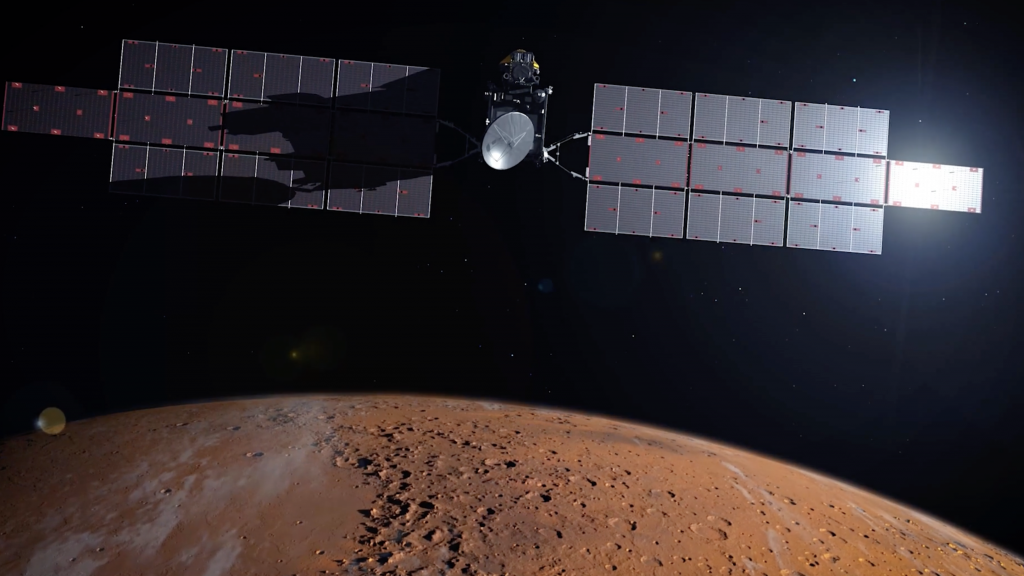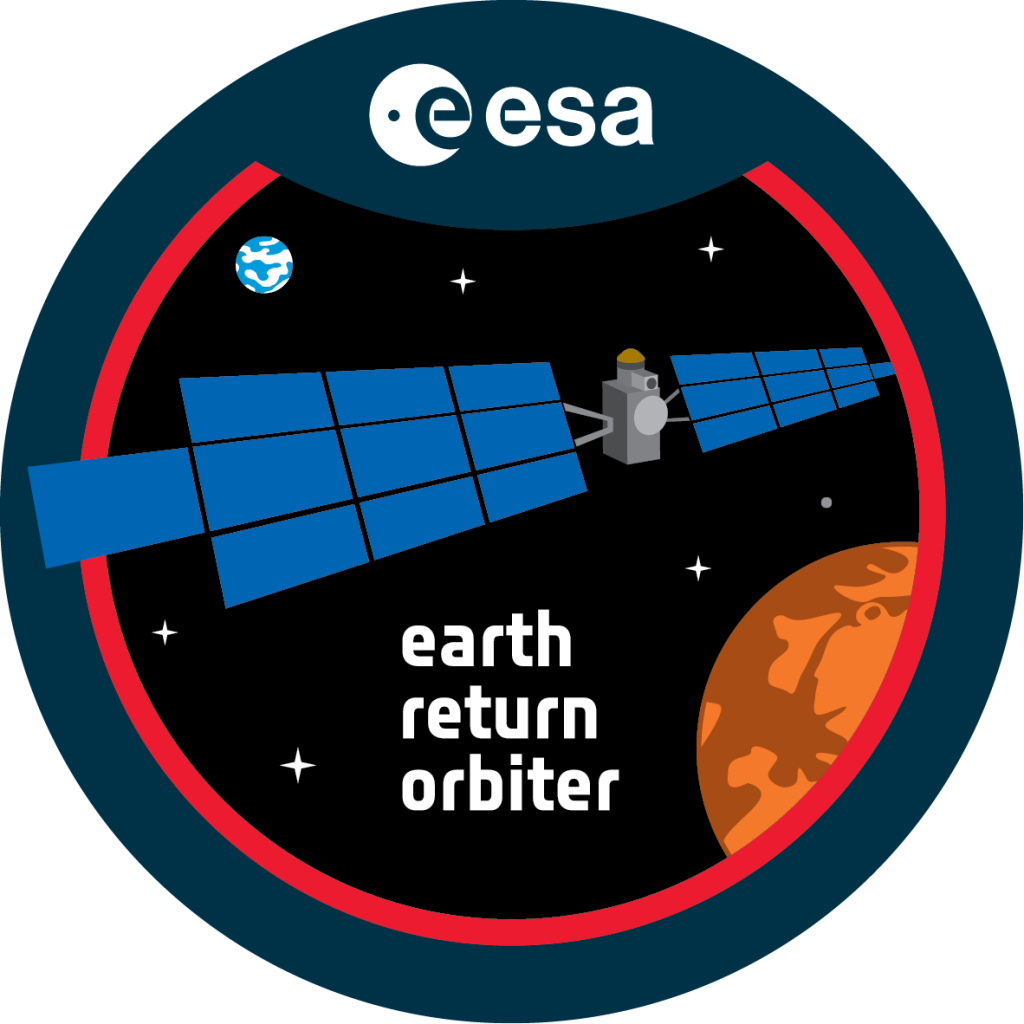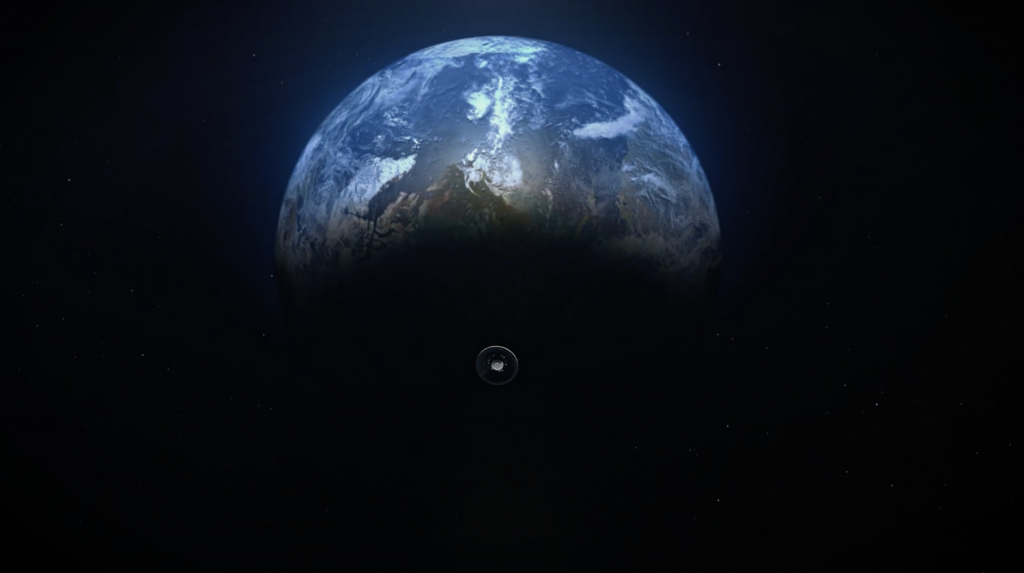A rendezvous involves bringing two objects together in space. The object to rendezvous with is not another spacecraft but the Orbiting Sample (OS) – a basketball-sized container built to carry sample tubes loaded with martian soil.
The tubes are collected by NASA’s Perseverance rover, already in operation on Mars. A European robot, the Sample Transfer Arm, will load the tubes into NASA’s Mars Ascent Vehicle. This vehicle will launch the container to a Mars orbit, where our spacecraft is expected to catch it before returning to Earth.
This is not exactly a mundane job: no spacecraft has yet performed a rendezvous over Mars, let alone brought back a sample container disguised as a basketball.

The reason is easy to grasp. Beyond the voyage to Mars, the one-way communication delay is generally over ten minutes, an awfully long time when one must operate a spacecraft.
The onboard guidance, navigation and control system is tasked to steer ERO towards its goal, and acts as the spacecraft’s neuralgic centre. This system must be capable to make most decisions using its own computational intelligence.
Real-time remote piloting from Earth is a dead-end as orders would be outdated before reaching the spacecraft. Our system is built to be highly autonomous and ERO’s sole pilot.
Detect and position
The Earth Return Orbiter is capable to detect and accurately measure the location of the Orbiting Sample from over a thousand kilometres down to contact.
This is not an easy feat. First, the 30-centimetre target is invisible to the naked eye at long range and less bright than most stars. Yet, ERO manages to identify it using a narrow angle camera that can detect faint points over a small field of view. Image processing algorithms are designed to observe its images and distinguish the Orbiting Sample.

Secondly, at short ranges, the distance to the arbitrarily rotating object is a challenge to estimate with accuracy, yet necessary to make a successful catch. Only a few centimetres of error are allowed! To meet its target at short range, ERO relies on lidar technology, a high-accuracy device able to scan the horizon with a laser and estimate the distance to the object.
Manoeuvre
The Earth Return Orbiter must not only estimate the trajectory of the ball, it must also manoeuvre towards it on its own.
This is a guidance and control task. ERO autonomously follows a trajectory leading to the Orbiting Sample using high performance chemical thrusters and reaction wheels. It doesn’t do it in one shot: several check points, called station-keeping points, are programmed along the way to allow operators to check the behaviour of the systems before authorising it to proceed further.
ERO transmits its performance data and patiently awaits the operators’ appraisal of its piloting skills. ESA’s Operations Centre in Darmstadt, Germany, doesn’t give away a Mars pilot license lightly to any spacecraft.
Capture and delivery
It is time now for NASA’s Capture, Containment and Return System, embarked on top of ERO, to swallow the Orbiting Sample and prepare it for return to Earth.

Once it approaches our planet, the guidance, navigation and control systems will have one last opportunity to showcase their piloting skills before bowing out: a high-precision throw to land the precious martian basketball in a proposed landing site in Utah, USA.
Sample delivery complete!
By Paul Duteis, rendezvous engineer for ESA’s Earth Return Orbiter

Discussion: 2 comments
Where does the second stage of the ascent module end? Couldn’t it be used as reference point for ERO?
This is Kelly, the ERO Systems engineering team lead. Indeed, the second stage will also have a beacon and we will pick up both this beacon and also will look for the upper stage optically to derive better the position of the samples that are released by the ascent module